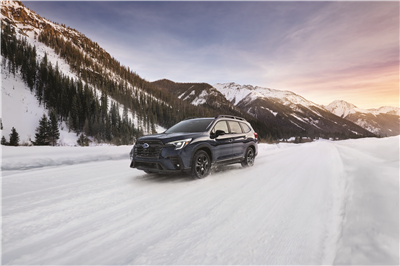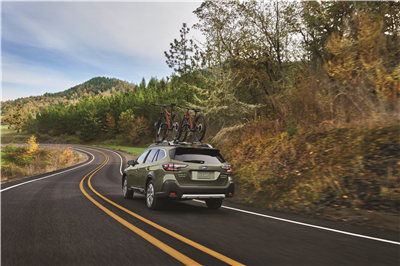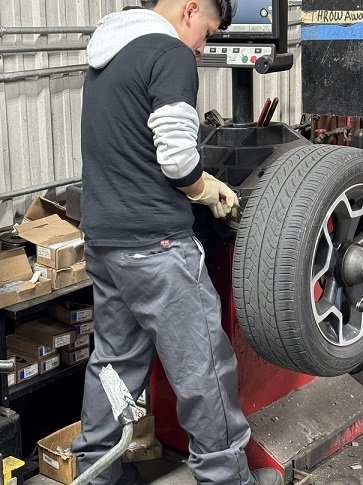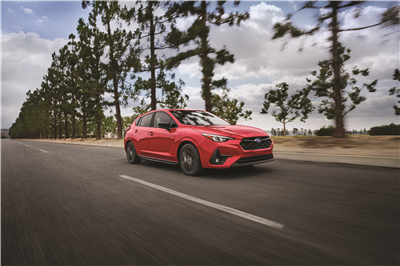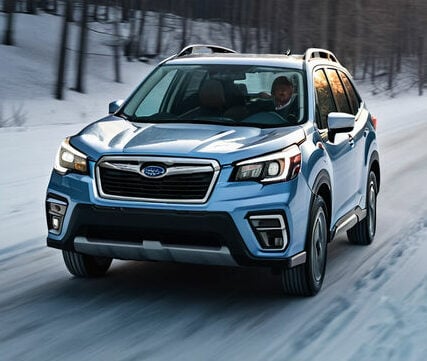Winter Driving Tips
As a Subaru owner in New England, you know that winter weather can be unpredictable and challenging. But with the right preparation and driving techniques, you can confidently navigate snowy and icy roads in your trusty Subaru. We spoke with Buddy Blichfeldt of Quality Subaru in Wallingford, Connecticut to get his top winter driving tips for Subaru owners.
The Importance of Proper Tire Maintenance
One of the most critical aspects of winter driving safety is ensuring your tires are in top condition. “First and foremost, Subaru committed to the New England market and the poor weather states where you have your snow and your ice and your rain,” says Blichfeldt. “To drive safely in your vehicle, it starts with the vehicle itself being all wheel drive. And then all the safety features that we have with the anti-lock braking system.”
Proper tire inflation is key. As temperatures drop, so does your tire pressure. “So as the temperature drops, your tire pressure will also drop. So that’s the first thing that we’re going to check when you bring in your vehicle,” explains Blichfeldt. Under-inflated tires can be unsafe and negatively impact fuel economy.
Embracing the New England Winter in Your Subaru
Tread depth is equally important. “The tread depth of your vehicle tires is gonna determine if you’re gonna be able to get through that snow and that rain safely,” says Blichfeldt. He recommends replacing tires when they reach around 4/32 inches of remaining tread depth, well before the legal minimum of 2/32 inches.
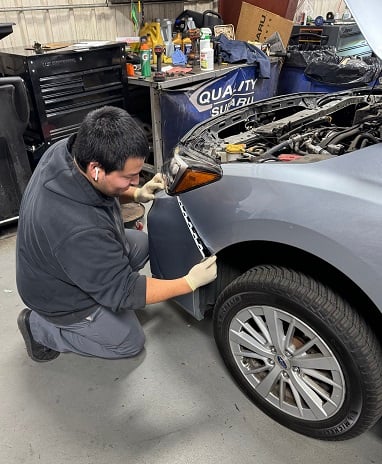
The Benefits of Winter Tires
While all-season tires are suitable for most New England driving, winter tires provide an extra level of safety in harsh conditions. “There are some of our customers that will switch to winter tires, tires specifically meant for the snow and for winter conditions,” says Blichfeldt. “Those are customers generally that may have a house and a ski area way up north in Vermont or New Hampshire, and where the weather is just so treacherous and there’s always snow.”
Winter tires feature special tread patterns and rubber compounds that remain pliable in cold temperatures, providing superior traction on snow and ice. Just remember to switch back to all-season tires when spring arrives, as winter tires wear quickly in warmer weather.
Subaru’s Safety Features Have Your Back
Subaru is renowned for its advanced safety features, which can be especially helpful during winter driving. “Subaru’s are really, really meant for New England,” says Blichfeldt. “First and foremost, Subaru committed to the New England market and the poor weather states where you have your snow and your ice and your rain.”
Standard Symmetrical All-Wheel Drive provides excellent traction and stability in slippery conditions. Anti-lock brakes help you maintain steering control during hard braking on icy roads. Advanced driver assist technologies like lane departure warning, automatic emergency braking, and adaptive cruise control provide an extra layer of safety.
Adjust Your Driving Habits for Winter Weather
Even with a well-prepared Subaru, it’s important to adapt your driving style for winter conditions. “Certainly, if the weather is inclement, just how you drive, taking more time, taking more time to get to where you have to go,” advises Blichfeldt.
Slow down and increase your following distance on snowy or icy roads. Accelerate and brake gradually to avoid skids. Be extra cautious on bridges and overpasses, which tend to freeze before other road surfaces. And if conditions are too treacherous, consider postponing your trip altogether.
According to Subaru, "Road trip season is all year long when you’re driving a Subaru, so make sure you’re ready for any winter trip."
Schedule Regular Winter Maintenance
To keep your Subaru performing its best all winter long, stay on top of routine maintenance. “Don’t be a stranger in the service department. Bring your vehicle in regularly,” says Blichfeldt. “I mean, when I say regularly, I mean, at least at a minimum twice a year, every six months, at a minimum, because that’s when you’re gonna need your engine oil changed at least.”
During winter service visits, Quality Subaru’s expert technicians will check your tire pressure and tread depth, inspect your brakes, battery, belts and hoses, top off fluids, and ensure your heating and defrosting systems are working properly. They’ll also change your engine air filter and cabin air filter as needed to keep your Subaru breathing easy.
By following these expert winter driving tips from Quality Subaru, you’ll be well-prepared to face the challenges of New England’s snowy season with confidence in your well-maintained Subaru. Remember, regular service and smart driving habits go a long way toward keeping you safe on the road all winter long. If you have any concerns about your Subaru’s winter readiness, don’t hesitate to contact the friendly professionals at Quality Subaru in Wallingford for personalized advice and top-notch service.
Winter Driving FAQs
How often should I check my tire pressure during the winter?
It’s a good idea to check your tire pressure at least once a month during the winter, and especially before any long road trips. Cold temperatures can cause tire pressure to drop, so it’s important to keep your tires properly inflated for safety and fuel efficiency.
Do I really need winter tires if I have all-wheel drive?
While Subaru’s Symmetrical All-Wheel Drive provides excellent traction in winter conditions, winter tires can still offer significant benefits in areas with heavy snowfall or frequent icy conditions. Winter tires have specialized tread patterns and rubber compounds that provide superior grip on snow and ice compared to all-season tires. However, for many New England drivers, all-season tires are suitable for winter use.
What should I keep in my Subaru for winter emergencies?
It’s wise to assemble a winter emergency kit for your Subaru, including items like an ice scraper, snow brush, shovel, sand or kitty litter for traction, jumper cables, flashlight, warm clothing and blankets, snacks and water, and a first-aid kit. You should also make sure your phone is charged before heading out in case you need to call for help.
When should I use my Subaru’s X-MODE feature?
X-MODE, available on select Subaru models, optimizes the engine, transmission, all-wheel drive system, and other components for maximum traction on slippery surfaces. Engage X-MODE when driving on snowy, muddy, or rutted roads at low speeds to help maintain control and prevent wheel spin. Just remember to disengage X-MODE when you return to normal road conditions.
How can I prepare my Subaru for winter storage?
If you plan to store your Subaru for an extended period during the winter, take steps to protect it from the elements. Fill the gas tank to prevent moisture buildup, add a fuel stabilizer, and change the oil and filter. Wash and wax the exterior, clean the interior, and consider placing a moisture absorber inside to combat humidity. If possible, start the engine and let it run for a few minutes every couple of weeks to keep the battery charged and prevent flat spots on the tires.




